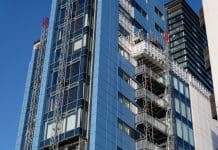Tom Kibblewhite, Director for Watts Group PLC provides an explanation of the right to light and the differences with what is termed daylight and sunlight amenity…
Skylines across the UK are once again punctuated with the signs of construction and development; tower cranes and scaffolding are a welcome sight to those of us in the property industry.
All developments, whether an extension, adding additional storeys or a new building have their own site specific issues that need to be addressed. Where these works are undertaken in close proximity to neighbouring properties, then the effects of the scheme may need to be considered before starting on site.
Increasingly, adjoining owners are raising the issue of the development’s effect on their ‘light’ as a concern at consultation stage or claiming a right to the light. In a world where there is increasing awareness of the benefits of natural light and local sustainable solar power generation, it perhaps isn’t that surprising.
However, the concept of protecting your light is thousands of years old with references to rights to light appearing in Roman law.
One area that causes much confusion is the two concepts of rights to light (also referred to as right of light) and daylight and sunlight amenity. Wrongly these are sometimes used interchangeably whereas they are, in fact, separate and distinct from one another.
It is entirely possible to have satisfied the local planning authority that there are no significant concerns in terms of daylight and sunlight amenity, but still have a potential rights to light issue that could prevent the development proceeding.
Set out below is a guide to the main differences between the two areas of light:
Rights to light – Things you need to know
• Rights to light is an easement, similar to a right of way over a neighbour’s land or building.
• The most common way to obtain a right to light is by enjoying the light uninterrupted and without permission for 20 years. Legal agreements expressly creating a right to light, historical windows and the sale of part of a land parcel can also create a right to light.
• Obstructing that passage of light can cause a nuisance under the law of Tort.
• An ‘adequate’ amount of light is the equivalent of the amount of light one foot away from a candle.
• If the amount of ‘adequate’ light in the room is reduced below 50-55% of the room area because of the development, then the loss of light is considered actionable in court.
• The remedy for causing actionable loss of light is an injunction to stop or take down the interfering part of the building. In certain instances the courts may grant damages in lieu of an injunction.
• Analysis only considers daylight from the sky.
• Sunlight, artificial lighting, reflected light internally or externally are not considered in the analysis.
• In most instances the matter is settled without the need to go to court with payment to the adjoining owner to release their right – six figure sums are not uncommon even outside of London.
Daylight and Sunlight – Things you need to know
• This is a Town and Country planning issue.
• There is no fixed method of assessing the impact of a development on adjoining properties; the BRE report ‘Site Layout Planning for Daylight and Sunlight – A Guide to Good Practice’ gives recommended levels of daylight and sunlight to be maintained and is often cited by local authorities as the standard assessment to adopt. The report is not however intended as a tool for planning.
• The BRE Report is based on a suburban environment (semi-detached properties and wide streets), therefore recommendations on daylight and sunlight levels need to be placed in context in urban environments.
• Sunlight and daylight are both considered as an amenity of adjacent occupiers, not a right.
• Residential properties are important, but the guidelines can also be applied to non-domestic properties where there is a reasonable expectation of daylight e.g. schools, hospitals, hotels, workshops and offices.
• Windows to bathrooms, stores, circulation areas and garages need not be analysed.
• Generally, if the reduction in the daylight and sunlight to a building because of a development is less than 20%, the BRE recommendations are satisfied.
• The impact on daylight and sunlight amenity is taken into consideration by the planning officer but planning permission may still be granted even if the development has a significant effect on adjoining occupiers’ amenity.
• Once planning is granted the only way to challenge is by judicial review.
Whilst the origins of protecting the light to a property may have been established in a time when artificial light was limited, there is still a clear preference for natural light. In my experience, occupiers are prepared to vigorously defend it – it seems that there’s a little bit of Roman in us all! ■
. . . . . . . . . . . . . . . . . . . . . . . . . . . . . . . . . . . . . . . . . . . . . . .
Tom Kibblewhite BSc (Hons) MRICS
Director
Watts Group PLC
Tel: +44 (0)161 831 6180
tom.kibblewhite@watts.co.uk













